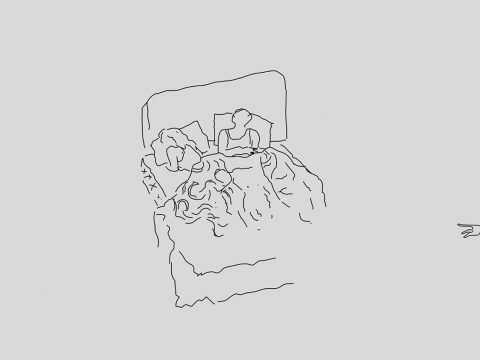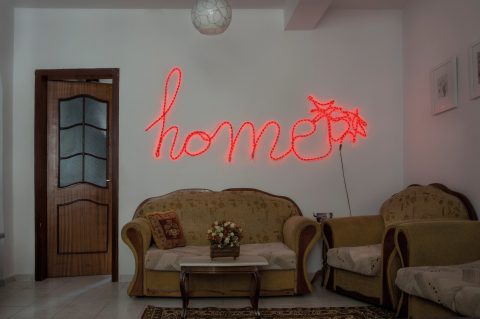How Milan and Warsaw are contributing to the history of Albanian contemporary art
There are two exhibitions at the moment in Europe which seem to be closely linked, almost as if they were one consequence of the other. Both of them deal with Albania and the best artists from this country.
- Edi Hila, Planting of Trees, 1972 oil, canvas, 153 × 203 cm National Gallery of Arts, Tirana. Ph. Daniel Chrobak.
- Stefano Romano, at Ex Gratia, Collezione Giuseppe Iannaccone, Milano.
- Courtesy Museum of Modern Art in Warsaw Ph. Daniel Chrobak.
- Silva Agostini, at Ex Gratia, Collezione Giuseppe Iannaccone, Milano.
- Edi Hila, Threatening, detail, 2008 from the series “Threat” oil, canvas, 69.5 × 92.5 cm Le Fonds municipal d’art contemporain, Paris.
- at Ex Gratia, Collezione Giuseppe Iannaccone, Milano.
- Edi Hila, Wedding, 2006 from the series “Threat” oil, canvas, 90 × 135 cm Centre Pompidou, Paris. Wedding, 2006 from the series “Threat” oil, canvas, 90 × 135 cm Centre Pompidou, Paris.
- Alket Frashëri, at Ex Gratia, Collezione Giuseppe Iannaccone, Milano.
- Edi Hila, Boulevard 1, 2015 from the series “Martyrs of the Nation Boulevard” oil, canvas, 120 × 120 cm Roger Diener Collection. Ph. Daniel Chrobak.
- Edi Hila, Under the Hot Sun, detail, 2005, from the series “Paradox”, oil, canvas, 89 × 135 cm Brian McCarthy and Daniel Sager Collection.
- Alketa, Ramaj, at Ex Gratia, Collezione Giuseppe Iannaccone, Milano.
- Edi Hila, Evening Panorama, 2006 from the series “Threat” oil, canvas, 93 × 114 cm Diana Mediu Collection. Ph. Daniel Chrobak.
- Lek M Gjeloshi, at Ex Gratia, Collezione Giuseppe Iannaccone, Milano.
- Lek M Gjeloshi, at Ex Gratia, Collezione Giuseppe Iannaccone, Milano.
- Edi Hila, Street Scene, detail, 2005 from the series “Threat”, oil, canvas, 110 × 130 cm Brian McCarthy and Daniel Sager Collection
- Jetmir Idrizi, at Ex Gratia, Collezione Giuseppe Iannaccone, Milano.
- Courtesy Museum of Modern Art in Warsaw Ph. Daniel Chrobak.
- Remijon Pronja, at Ex Gratia, Collezione Giuseppe Iannaccone, Milano..
- Fatlum Doçi, at Ex Gratia, Collezione Giuseppe Iannaccone, Milano.
- Edi Hila, Absent Presence, 2014 from the series “Relations” oil, canvas, 142 × 105 cm “Unë e du Kosovën” Foundation. Ph. Daniel Chrobak.
- Edi Hila, Secret Police Informant, 1974 from the series “Propaganda”, oil, plywood, 59.8 × 40 cm Museum of Modern Art in Warsaw.
- Iva Lulashi, at Ex Gratia, Collezione Giuseppe Iannaccone, Milano.
Warsaw Museum of Modern Art (Muzeum Sztuki Nowoczesne) is dedicating a wide retropective to Edi Hila, a painter born in Scutari 74-year-ago who became notorious to the international public thanks to Documenta 14. Adam Szymczyk, who is also originally from Poland, exhibited his works at the Odeion in Athens, possbily the best chapter of the much-criticised last edition of the Kassel’s quinquennial art show. Meanwhile, during the contemporary art week in Milan, which just ended yesterday, one of the most talented pupils of Hila, Adrian Paci, has curated for the Collezione Iannaccone a collective exhibition featuring those artists who are nowadays Paci’ pupils, that is to say those artists in residence at his Art House School in Scutari. This ideal line which connects Warsaw to Milan depicts the past, present and future of contemporary art in Albania, a country which lived with Enver Hoxha one of the toughest regime of the Iron Curtain. Nowadays, however, the country – under the guidance of the prime minister Edi Rama, who has an illustrious artistic past indeed -, is officially waiting to enter the European Union.
‘Edi was one of my professors when I was studying at the Accademia in Tirana‘ recalls today Paci, who has emigrated to Italy with his wife and two daughters in 1997, but returned to his country as soon as the conditions made this possible. ‘He was a careful, solitary and sometimes even shy man. You could see that the regime had traumatised him‘. In the 1970s, due to the painting titled ‘The plantation of trees’, currently on exhibition in Warsaw, Hila was forced by the socialist regime first to work on a chicken production implant, and then at the propaganda structure of the Country. During this period of time Hila has quietly maintained his relationship with art by secretly drawing, just for himself. He went back to painting only in the 1990s, after the fall of Berlin wall, when he was called to teach at the Accademia in Tirana, where the current prime minister Edi Rama has also taught. ‘They were both my professors – explains Paci -. Rama was positive, encouraging, and was giving you examples to follow. Hila was actually the opposite, but we – the students – showed a great respect for him. To us he embodied the fight against the cultural closure imposed by the socialism, even though for him it was more an internal battle than a public statement‘.
As a matter of fact, the work that caused Hila to be marginalized by the regime wasn’t really a rebellion hymn. In his paintings, both of yesterday and today, there is rather an introspective and intimate gaze, inclined to the use of certain symbols and metaphors which may be hard to grasp, often elegant, sometimes veiled by a bitter irony. He picks the subject with the typical attitude of a reportage photographer, but then he takes the image to the reign of painting thus extracting from reality its highest meaning.
Adrian Paci founded his Art House in 2015, with the intent of bringing to Scutari, in the house where he grew up, that art world which Albania has excluded itself from for many years. There is also an artist residence here, where Paci tries to convey to young Albanian talents of today his personal experience. As previously said, ten of these talents are now on exhibition at the Collezione Iannaccone. According to Rischa Paterlini, director of the collection and co-curator with Paci of the exhibition (titled Ex-Gratia), ‘what strikes the most about these artists is how much they have been keeping away from the art market, and its logic‘. And this is indeed a fundamental trait of the long-distance dialogue between Milan and Warsaw. Hila has lived for many years within this practical impossibility to have a market, as all the artists who lived beyond the Wall, until the Wall was up. Today it’s important to point out that in the socialist and communist regimes of the previous century there wasn’t a real art market. Art, if not committed to propaganda, was entirely a personal practice and essentially antithetical to the professionalism that, on the contrary, had developed in the Western world. This legacy comes up as a distinctive trait of the artworks on show in Milan, right while MiArt, the city’s art fair, reaffirmed the structural ‘tiranny’ of the fair-model – it was certainly a success for the city, yet everyone realises that the fairs today often impose certain boundaries which are stricter than those of the academies of the past.
Instead, Paci recalls ‘from Edi I learned to be problematic, that is to look at things from all the possible points of view. He taught me that you should never take the world for what it is. You should always call it into question‘. This is the message Paci is attempting to get across to his students, the new generation. And this is also what possibly allows to best comprehend as Hila’s paintings (the intense architectures in Tirana especially), as the works by Silva Agostini (Hila’s daughter), Bora Baboçi, Fatlum Doçi, Lek M Gjeloshi, Jetmir Idrizi, Iva Lulashi, Alket Frashëri, Remijon Pronja, Alketa Ramaj and Stefano Romano. ‘Their memories of the regime are fading away – notices Paci -, nowadays these artists look at the future without feeling nostalgic. I also don’t look back nostalgically to the past and to the crimes that the regime accepted to commit in order to keep itself alive. Nevertheless, this doesn’t mean that I am – like them – unaware of the harms of our society. Nobody regrets the past, not even those moments when socialism had good intentions. It is equally true however that none of us is enthusiastic about where capitalism has led those societies which embraced it‘. As Hila would perhaps say, doubting helps.
November 25, 2020






















